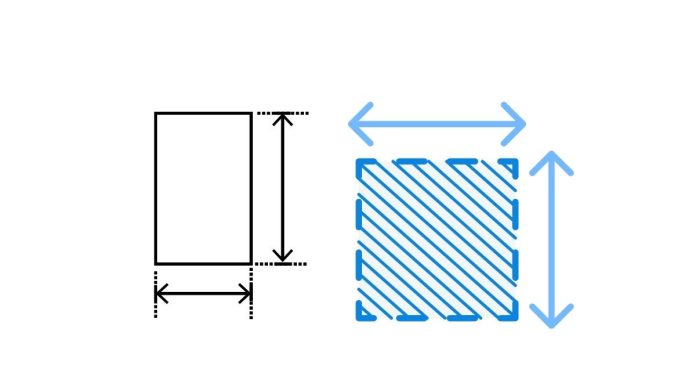When describing the dimensions of an object, particularly in relation to measurements like width, length, and height, the order in which these dimensions are listed can vary depending on the context and the specific standard being followed. However, there are some general conventions and rules that are commonly used across various industries, such as in architecture, manufacturing, and shipping. Below is a detailed explanation of the typical order in which these dimensions are arranged, as well as the reasoning behind this order:
1. Length
- What is it?: Length is generally considered the longest dimension of an object. It refers to how long something is, often measured along the horizontal axis.
- Standard Placement: Length is typically listed first when describing the size of an object. It is the primary measurement of an object when its overall size is being specified.
- Examples:
- In a box or rectangular object: The length is the longer side.
- In a room: The length would refer to the longer wall.
- Why First?: Length is often considered the “primary” dimension, especially for objects that are longer than they are wide or tall. It is usually the most obvious dimension in everyday life and design.
2. Width
- What is it?: Width is the second largest dimension and refers to the measurement across the object, perpendicular to the length. It is often considered the “horizontal” dimension.
- Standard Placement: Width is generally listed second when giving the dimensions of an object.
- Examples:
- In a box or rectangular object: Width is the shorter side compared to length.
- In a room: The width is usually the shorter wall.
- Why Second?: Width is secondary to length because, in many cases, width is less prominent. For example, a piece of furniture like a table has a length and width, where the length is more important when placing it in a room.
3. Height (or Depth)
- What is it?: Height is the vertical dimension of an object, referring to how tall something is. It measures how high or low an object stands.
- Standard Placement: Height is typically listed third in the series of dimensions. If the object is oriented vertically, this would describe how tall the object is.
- Examples:
- In a box or rectangular object: Height is how tall the box is when standing upright.
- In a room: Height refers to the ceiling height from the floor.
- Why Third?: Height is usually the least variable dimension for most objects. In objects like furniture or storage boxes, the height is often the least important measurement when compared to length and width.
Typical Order for Listing Dimensions
The most commonly used order for listing dimensions is:
- Length x Width x Height (L x W x H)
This format is used in a variety of contexts, including:
- Furniture: For example, a couch might be listed as 72″ (L) x 30″ (W) x 35″ (H), meaning 72 inches long, 30 inches wide, and 35 inches high.
- Shipping or Packaging: A box might be listed as 12″ (L) x 10″ (W) x 8″ (H), meaning the box is 12 inches long, 10 inches wide, and 8 inches high.
Exceptions and Variations
- For Volume (Depth) Instead of Height:
- In some contexts, particularly in 3D design or storage, depth might replace height in the order of dimensions. This is common when referring to objects that are oriented in a particular direction.
- Example: A TV or monitor might be listed as 40″ (L) x 10″ (W) x 2″ (D), where “D” represents the depth (thickness), and “H” could be used for height in other scenarios.
- Shipping Boxes and Packaging:
- For items that are going to be shipped, the dimensional order may sometimes vary based on packaging conventions. The order might be:
- Length x Height x Width (L x H x W), or
- Height x Length x Width (H x L x W), depending on how the object is intended to be oriented during shipment or storage.
It’s always a good idea to refer to the specific industry or organizational standards if there is any confusion about the dimension order for a particular situation.
- For items that are going to be shipped, the dimensional order may sometimes vary based on packaging conventions. The order might be:
- In the Case of Cubes or Squares:
- If the object is a cube or square, all dimensions are equal, so the order of length, width, and height doesn’t matter because the measurements are the same.
- Example: A cube with a side of 5 cm would simply be 5 cm x 5 cm x 5 cm, and the order doesn’t matter.
Why Does the Order Matter?
The order in which dimensions are listed provides clear, standardized communication, especially in industries like shipping, manufacturing, architecture, and design. For example:
- Consistency: Using a standardized order ensures consistency in communication, preventing misunderstandings or errors.
- Efficiency: When purchasing or selling items, knowing the exact dimensions in the correct order helps people visualize how the item will fit in a space or within packaging.
- Conventions: The conventional order (Length x Width x Height) is broadly accepted in a variety of industries and is familiar to most people, making it easier to interpret measurements quickly.
Summary of Common Orders for Different Contexts
- Furniture/Room dimensions (typical): Length x Width x Height (L x W x H)
- Shipping packages (typical): Length x Width x Height (L x W x H) or Length x Height x Width (L x H x W)
- Monitor/TV (typical): Length x Width x Depth (L x W x D) or Length x Depth x Width (L x D x W)


